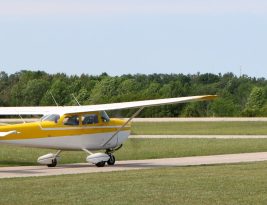In today’s post, we are going to discuss the Airplane Flight Manual (AFM). The AFM is a document that is developed by your airplane’s manufacturer containing specific information in regards to operating instructions of the aircraft. These manuals are specific to an aircraft’s serial number and are approved by the
…Tag: FAA
View All CategoriesThe success of a flight depends largely on thorough preparation. In the course of your training, a pattern of regular preflight actions should be developed to ensure that this is the case. This includes planning a flight, and checking
…This week we’re looking again at flight instruments. More specifically, gyroscopic instruments. Take a look at what we’ve posted so far on flight instruments, including our CFI’s series on pitot-static systems. This post is excerpted from Bob Gardner’s The Complete Private Pilot.
The attitude indicator, the
…Let’s recap some of the important information we learned from Monday’s post on carburetor ice.
As air flows through a carburetor, it expands rapidly. At the same time, fuel entering the airstream is vaporized. Expansion of the air and vaporization of the fuel causes a sudden cooling
…As the angle of attack is increased (to increase lift), air will no longer flow smoothly over the upper wing surface but instead will become turbulent or “burble” near the trailing edge. A further increase in the angle of attack will cause the turbulent area to expand forward.
Today, we’re going to look at some flight maneuvers from one of our favorite books, the Pilot’s Handbook of Aeronautical Knowledge. Critical load factors apply to all flight maneuvers except unaccelerated straight flight where a load factor of 1 G is always present. Certain maneuvers considered in this
…The fundamentals of visual navigation include two main methods as discussed in Monday’s post, pilotage and dead reckoning, each of which should be used in conjunction with the other. Whether flying by means of visual navigation or even by reference to instruments like a VOR it is
…Today, we’ll put together a few things we’ve learned on the Learn To Fly Blog to introduce a skill every beginning student should develop: thinking in terms of a wind triangle. Check out last week’s posts on magnetic variation and using your E6B Flight Computer to
…

